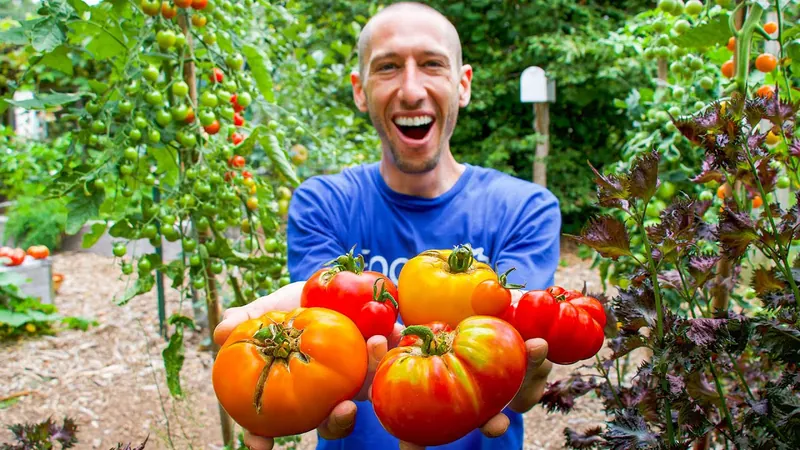
Revolutionary Discovery Set to Transform Tomatoes and Other Fruits
2025-05-23
Author: William
Groundbreaking Genetic Breakthrough
Imagine biting into a tomato that’s not only larger but bursts with flavor like never before! Thanks to an incredible new research breakthrough from Johns Hopkins University, this could soon be a reality. A dedicated team of scientists has identified key genes that determine the size and appearance of tomatoes and eggplants, paving the way for enhanced produce that meets the needs of consumers and supports farmers worldwide.
Unlocking the Secrets of the Nightshade Family
Utilizing cutting-edge genetic tools, the researchers delved into the DNA of 22 species from the nightshade family, which includes beloved staples like potatoes, tomatoes, and eggplants. They uncovered significant genetic changes that have occurred over millions of years, creating a comprehensive DNA map that reveals how to enhance crucial traits such as fruit size.
The Role of Gene Duplication
One major highlight of the research is the discovery of gene duplications, known as paralogs, which play a crucial role in key features such as flowering times, fruit shape, and size. While studying gene duplications, the researchers found thousands linked to domestication—essentially how wild plants were shaped into the crops we rely on today.
From Wild to Wonderful
For instance, experiments on the Australian wild relative of common crops, forest nightshade, showed that tweaking the crucial CLV3 gene (responsible for fruit size) led to unexpected results. By disabling both gene copies, the scientists produced oddly shaped plants unfit for sale. However, editing just one copy resulted in bigger, healthier fruits.
Spotlighting the African Eggplant
In a thrilling development, the researchers identified a unique gene in the African eggplant, known as SaetSCPL25-like, which regulates the number of seed cavities in fruit—resulting in larger produce. By editing this gene in tomatoes, they achieved a remarkable increase in fruit size, showcasing the power of comparative genetics.
The Future of Pan-Genetics
This research signifies a leap into 'pan-genetics,' a method that connects genetic knowledge across various crops. By harnessing insights from both local and global varieties, scientists can better transfer genetic improvements, driving innovation in agriculture.
Empowering Farmers Globally
Ultimately, this work doesn’t just aim for bigger fruits; it’s about equipping farmers with the tools they need to thrive. Many local varieties struggle to meet market standards, but these breakthroughs could help farmers produce more resilient and marketable crops, bolstering food security and economic stability.
A Bright Agricultural Horizon
Published in the prestigious journal Nature, the researchers employed CRISPR-Cas9 technology to refine and tweak the DNA of these plants, enhancing their growth capabilities. The implications of this research extend far beyond basic agriculture, promising improved disease resistance and adaptability to challenging growing conditions.
Seeds of Change
With these revolutionary findings, the food landscape stands poised for transformation. Researchers can now shape crops that not only satisfy consumer demands but also thrive in diverse environments. This pioneering journey, guided by science, illustrates how enhanced understanding of genetics can make the world’s dinner plates more abundant, nutritious, and flavorful.









 Brasil (PT)
Brasil (PT)
 Canada (EN)
Canada (EN)
 Chile (ES)
Chile (ES)
 Česko (CS)
Česko (CS)
 대한민국 (KO)
대한민국 (KO)
 España (ES)
España (ES)
 France (FR)
France (FR)
 Hong Kong (EN)
Hong Kong (EN)
 Italia (IT)
Italia (IT)
 日本 (JA)
日本 (JA)
 Magyarország (HU)
Magyarország (HU)
 Norge (NO)
Norge (NO)
 Polska (PL)
Polska (PL)
 Schweiz (DE)
Schweiz (DE)
 Singapore (EN)
Singapore (EN)
 Sverige (SV)
Sverige (SV)
 Suomi (FI)
Suomi (FI)
 Türkiye (TR)
Türkiye (TR)
 الإمارات العربية المتحدة (AR)
الإمارات العربية المتحدة (AR)